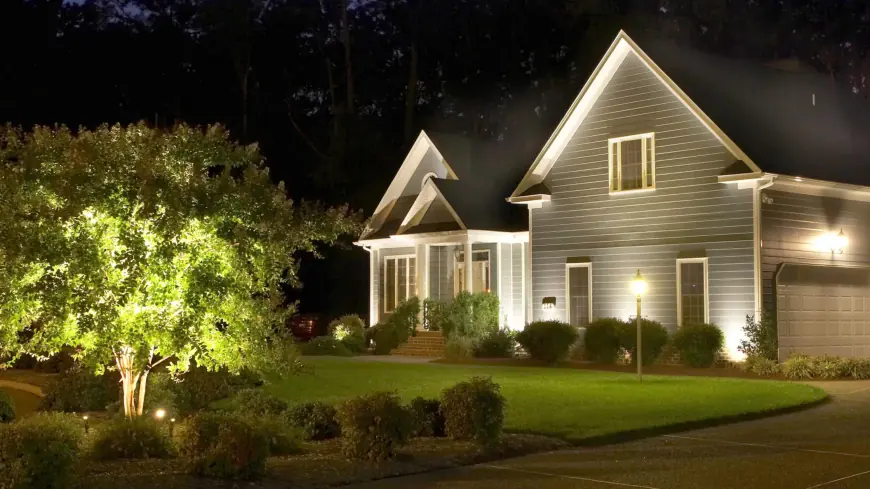Why Low Voltage Lighting Is the Smart Choice for Modern Commercial Properties
Choosing low voltage lighting installation is not just about joining a trend.

Introduction: The Quiet Revolution in Commercial Lighting
In the evolving world of commercial infrastructure, lighting systems have become more than a functional necessity. They now influence energy consumption, security standards, brand aesthetics, and even regulatory compliance. Among the most influential trends reshaping this domain is low voltage lighting installation. Once relegated to residential backyards or pathway accents, this technology is now gaining serious traction across commercial sectors in Washington and beyond. From reducing long-term operational costs to enabling advanced smart control systems, low voltage lighting is not just an upgrade—it is a strategic shift.
Rethinking Energy: Why Low Voltage Matters
Energy efficiency is no longer a preference; it is an imperative. Low voltage lighting installation systems typically operate on 12 to 24 volts, significantly lower than traditional 120-volt systems. The result is a reduction in energy waste, particularly during off-peak usage periods. According to a report by the U.S. Department of Energy, facilities that adopted low voltage LED systems experienced energy savings of up to 60%.
This level of efficiency is not merely about cutting costs. It aligns with broader sustainability goals and local mandates, particularly in states like Washington where green building certifications are encouraged through incentive programs.
Design Meets Efficiency: Lighting That Serves Dual Purpose
Traditionally, commercial lighting was a matter of illuminating space for functionality. Today, aesthetics play a co-equal role. Low voltage lighting systems offer extraordinary flexibility in terms of design. With smaller fixture sizes and customizable beam angles, architects and designers can integrate lighting in ways that enhance the architecture rather than disrupt it.
Whether highlighting landscape features or creating safe, ambient walkways, low voltage lighting installation in WA allows for tailored lighting plans without overwhelming energy budgets. Additionally, dimmable options and color-temperature adjustments add nuance that improves both user experience and property value.
Safety, Compliance, and Ease of Maintenance
Safety is paramount in any commercial setting. Low voltage lighting is inherently safer due to the reduced electrical load, minimizing risks of electrical shock or fire hazards. This makes installation feasible even in areas close to water or in densely trafficked pedestrian zones.
From a compliance standpoint, jurisdictions are increasingly adopting stricter building codes that prioritize energy efficiency and sustainable design. Opting for low voltage lighting installation can streamline the approval process for new builds or retrofits.
Maintenance is another key factor. Low voltage LED systems have longer lifespans, often exceeding 25,000 to 50,000 hours, and many include smart monitoring capabilities. This reduces the frequency and cost of replacements, while enabling predictive maintenance through IoT integrations.
The Economic Argument: Real Savings Over Time
The initial investment in low voltage lighting might raise questions for CFOs and facilities managers. However, total cost of ownership tells a different story. Energy-efficient performance, coupled with reduced maintenance costs, delivers a strong ROI within just a few years.
According to Energy Star estimates, converting an average commercial property to low voltage LED lighting can save up to $0.50 per square foot annually. For a 20,000-square-foot facility, that translates to $10,000 in yearly savings—a compelling case in any economic climate.
Beyond utility bills, smart lighting systems allow facility managers to automate lighting schedules based on usage patterns, further improving efficiency and comfort without additional labor costs.
Where It Fits: Commercial Applications and Success Examples
Low voltage lighting is not one-size-fits-all, but it is close. It works seamlessly across a variety of commercial settings:
-
Retail complexes benefit from accent and window lighting that draws attention after hours without spiking electricity costs.
-
Office campuses enjoy modern aesthetics and safer walkways through strategic lighting design.
-
Healthcare facilities integrate it for patient-centric spaces where soft lighting is essential.
-
Hospitality venues use low voltage systems to create mood-rich environments while remaining operationally efficient.
One notable example includes a Seattle-based tech campus that transitioned entirely to low voltage LED exterior lighting. Within 18 months, their energy expenditure for lighting dropped by 58%, while user satisfaction scores (measuring lighting ambiance and navigation ease) rose by 34%.
Conclusion: A Smarter Standard for the Next Decade
Choosing low voltage lighting installation is not just about joining a trend. It is about embracing a better standard—one that aligns with future-forward values, budget accountability, and the demand for intelligent infrastructure.
As expectations grow for sustainability, safety, and sophisticated design, commercial leaders must adopt technologies that elevate their properties holistically. In this light, low voltage lighting installation in WA offers both a practical solution and a strategic advantage.
FAQs
1. What is low voltage lighting exactly?
Low voltage lighting operates on 12 to 24 volts and is typically powered through a transformer that reduces the standard electrical load, making it safer and more energy efficient.
2. How long do low voltage LED systems last?
Most systems offer lifespans of 25,000 to 50,000 hours, depending on the product and usage conditions.
3. Is it suitable for large commercial buildings?
Yes. It is scalable and works well in large settings including office parks, hospitals, retail, and multi-unit residential buildings.
4. Are there utility incentives for switching?
In many states, including Washington, utility companies and municipalities offer rebates or incentives for upgrading to energy-efficient systems.
5. What kind of maintenance does low voltage lighting require?
Minimal. With longer lifespans and optional smart monitoring, most systems require far fewer check-ups or replacements.
6. Does low voltage lighting compromise brightness?
Not at all. LED technology has advanced to deliver comparable or even superior brightness with far less energy consumption.
What's Your Reaction?
 Like
0
Like
0
 Dislike
0
Dislike
0
 Love
0
Love
0
 Funny
0
Funny
0
 Angry
0
Angry
0
 Sad
0
Sad
0
 Wow
0
Wow
0


















































